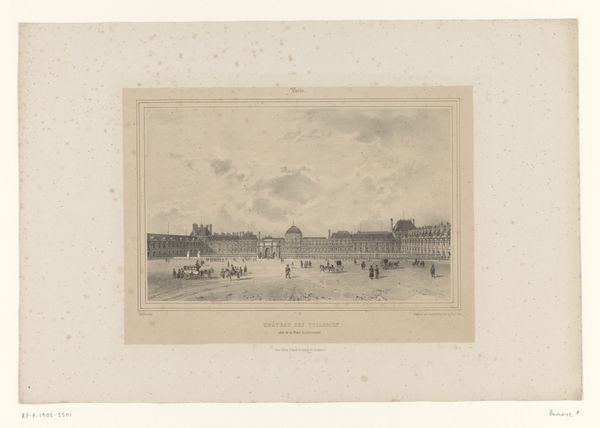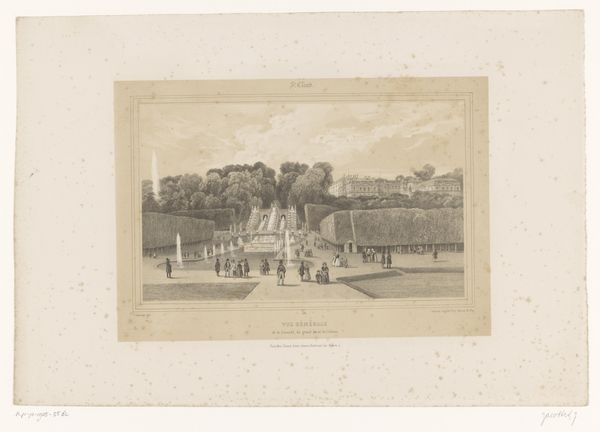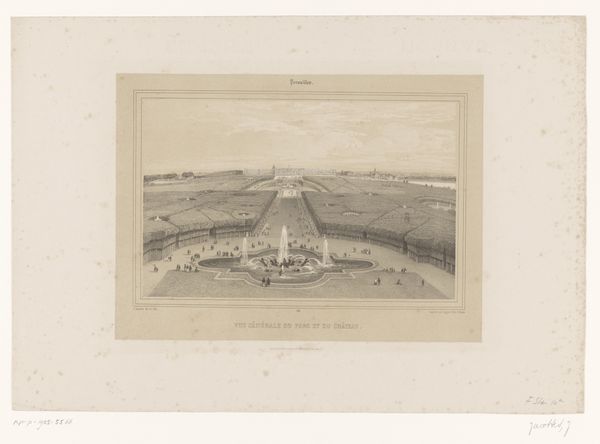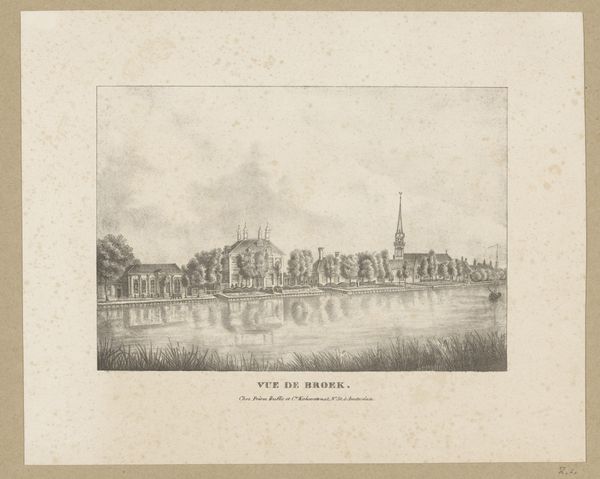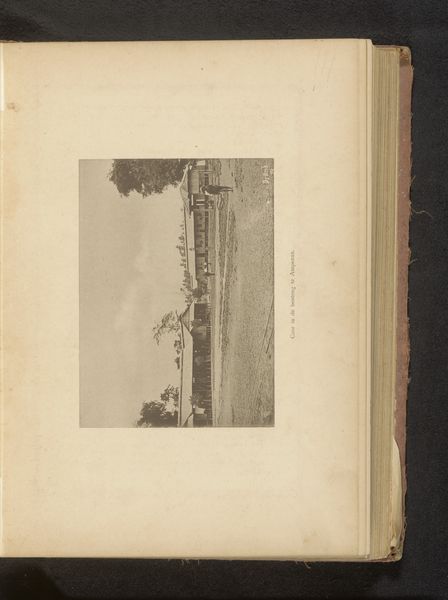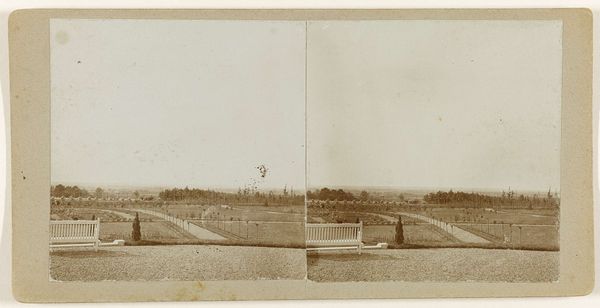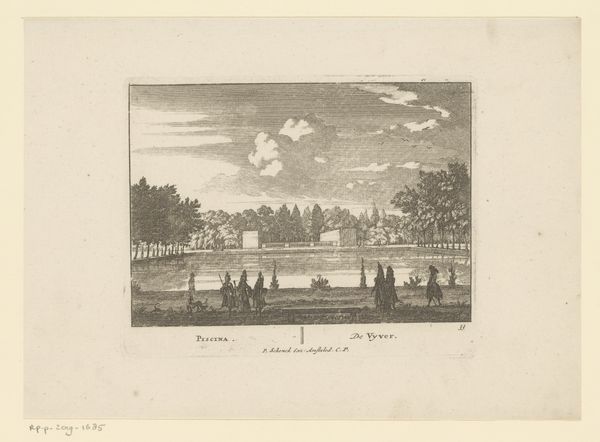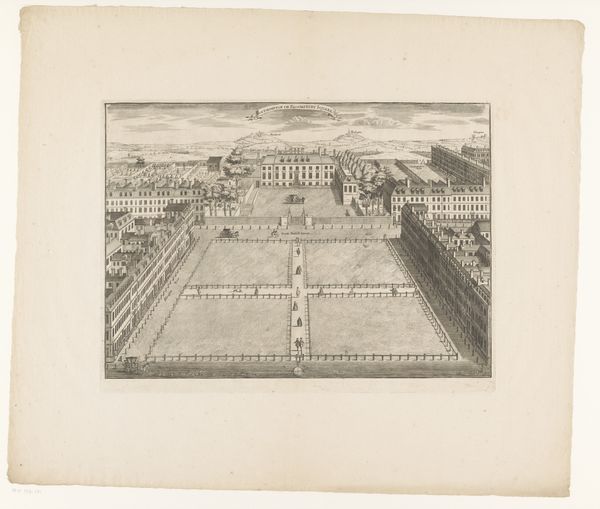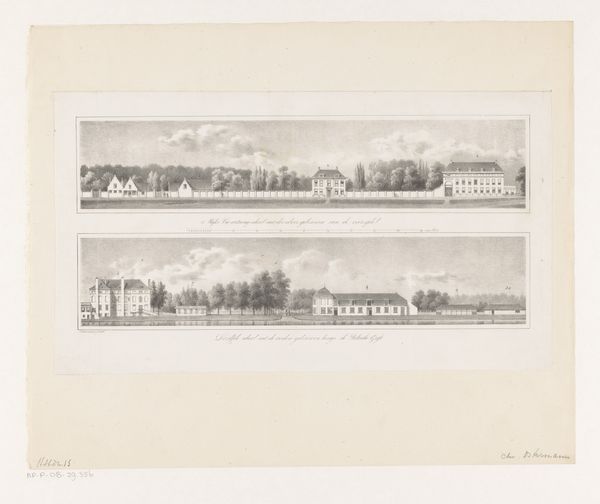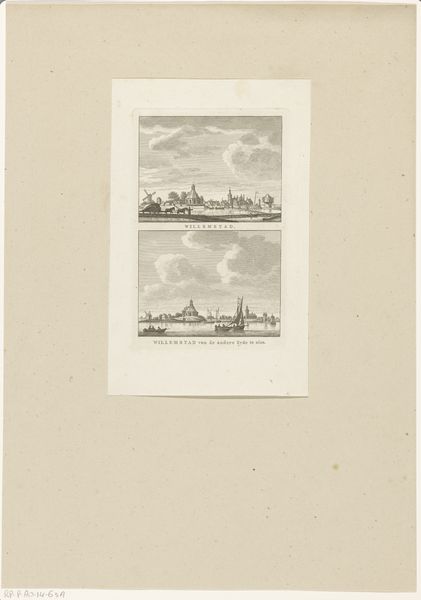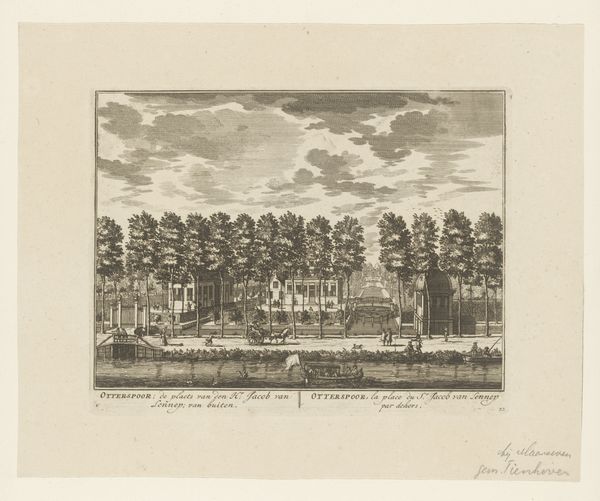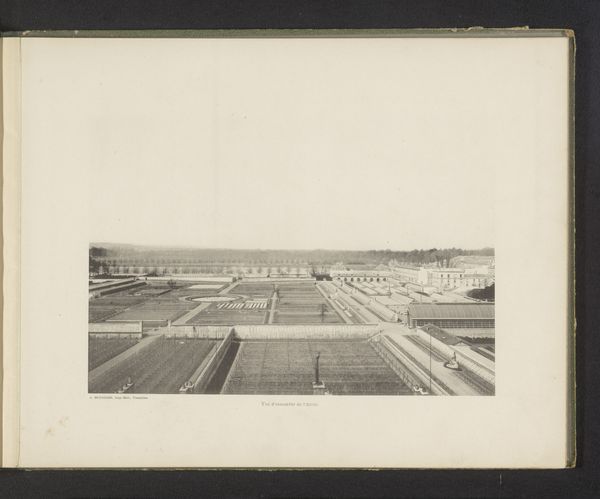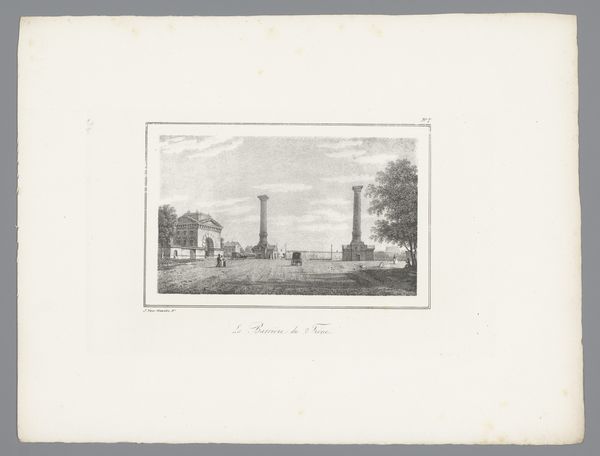
Zicht op het Tuilerieënpaleis vanuit de Tuin van de Tuileriën c. 1860
0:00
0:00
charlesfichot
Rijksmuseum
Dimensions: height 441 mm, width 320 mm
Copyright: Rijks Museum: Open Domain
Charles Fichot captured these views of the Tuileries Palace and Garden in this print. Here, we observe the Palace rendered as a symbol of power, rigidly structured and geometrically precise, dominating its surrounding landscape. The formal garden in the foreground is evocative of the Garden of Eden, but its rigid structure is far from natural. We can see echoes of this symbolism in other European royal gardens, such as those at Versailles. Manicured gardens like these are symbols of human control over nature, where even the subconscious desires for order and dominance are expressed through the geometry of the flower beds and pathways. The palace itself, with its imposing façade and symmetrical design, speaks to the human desire for stability, projecting an image of enduring strength and grandeur. However, history teaches us that such symbols of power are transient. Consider the cyclical nature of history, where such symbols rise, dominate, and eventually fade, only to be replaced or reinterpreted in new contexts. The echoes of these grand structures resonate through time, reminders of the ever-shifting nature of human ambition.
Comments
No comments
Be the first to comment and join the conversation on the ultimate creative platform.
